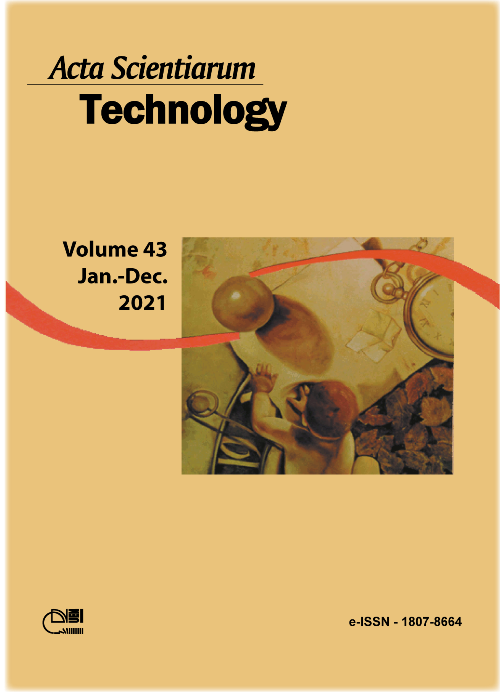Reliability analysis using experimental statistical methods and AIS: application in continuous flow tubes of gaseous medium
DOI:
https://doi.org/10.4025/actascitechnol.v43i1.55825Keywords:
Structural health monitoring; artificial immune systems; negative selection algorithm; flow tubes; experimental statistical methodsAbstract
The motivation for the development of this work arose from the observation of maintenance in pressure vessels, which are categorized as highly hazardous security risk products. The costs of detecting failures in the production systems allow the result of the process to be safe and of good quality, using standardized tests internally within the company. The main objective of this work demonstrates the efficiency and robustness of the artificial immune system (AIS) of negative selection in the detection of failures by recognizing the vibration signals and categorizing them in the degree of probability and level of severity of failures. The intrinsic objectives are the application of the elimination of signal noise by the Wiener filter, and the processing of data-Wiener data using experimental statistics. The result of this work successfully demonstrates the precision between the experimental statistical and AIS techniques of negative selection; the robustness of the algorithm in precision and signal recognition; and the classification of the degree of severity and probability of failure
Downloads
Downloads
Published
How to Cite
Issue
Section
License
DECLARATION OF ORIGINALITY AND COPYRIGHTS
I Declare that current article is original and has not been submitted for publication, in part or in whole, to any other national or international journal.
The copyrights belong exclusively to the authors. Published content is licensed under Creative Commons Attribution 4.0 (CC BY 4.0) guidelines, which allows sharing (copy and distribution of the material in any medium or format) and adaptation (remix, transform, and build upon the material) for any purpose, even commercially, under the terms of attribution.
Read this link for further information on how to use CC BY 4.0 properly.











8.png)




